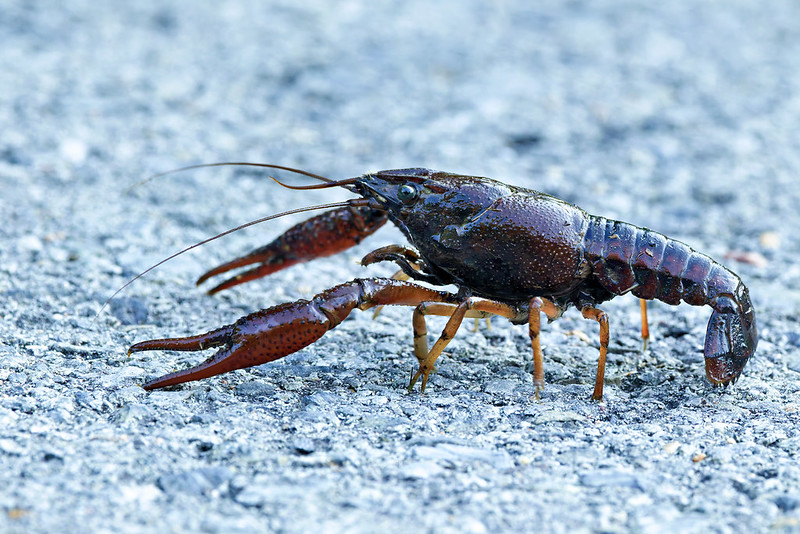Every spring at Sequoyah National Wildlife Refuge, I start spotting crayfish on the roads. It’s always surprising to see them so far from water, but there’s a reason they’re out and moving this time of year.

Crayfish are more active in spring because of the warmer weather and higher moisture levels. Spring rains raise the water table, making it easier for them to travel across land. They leave their burrows or creek banks in search of mates or new homes.
Why Roads Become Crossing Paths
Many of the roads through Sequoyah run close to streams, ponds, and marshy areas. When crayfish leave one wet area for another, roads sometimes get in the way. Crayfish aren’t fast movers, and some take a direct path without knowing the risk. That’s how I end up photographing them in places like gravel roads or parking areas.
During these crossings, they often take up a defensive pose, claws raised high. I wrote about one such sighting recently in Crayfish Defensive Pose at Sequoyah National Wildlife Refuge. It’s a response to any possible threat, including birds, raccoons, and even tires.
Photography Tip: Get Low for Detail
If you spot a crayfish and want to take a photo, try getting down low to its level. This gives a better sense of its size and texture. Early morning or overcast light helps cut down on harsh shadows and glare from the wet shell.
Helping Crayfish Stay Safe
If you visit the refuge this time of year, it’s a good idea to drive slow on wet days. Keep an eye out for wildlife on the road, especially after a rain. I’ve seen turtles, snakes, frogs, and of course, these bold little crayfish.
Related Post
I wrote another blog post about Crayfish Crossing Roads at Sequoyah Refuge during the summer. It’s interesting to compare their behavior across seasons.
Photo Details
- Camera: Canon EOS R5 Mark II
- Lens: RF 100-500mm F4.5-7.1 L IS USM
- Aperture: ƒ/10
- Focal Length: 428.0 mm
- Shutter Speed: 1/400
- ISO: 8000
- Exposure Mode: Manual
- Exposure Compensation: 0
